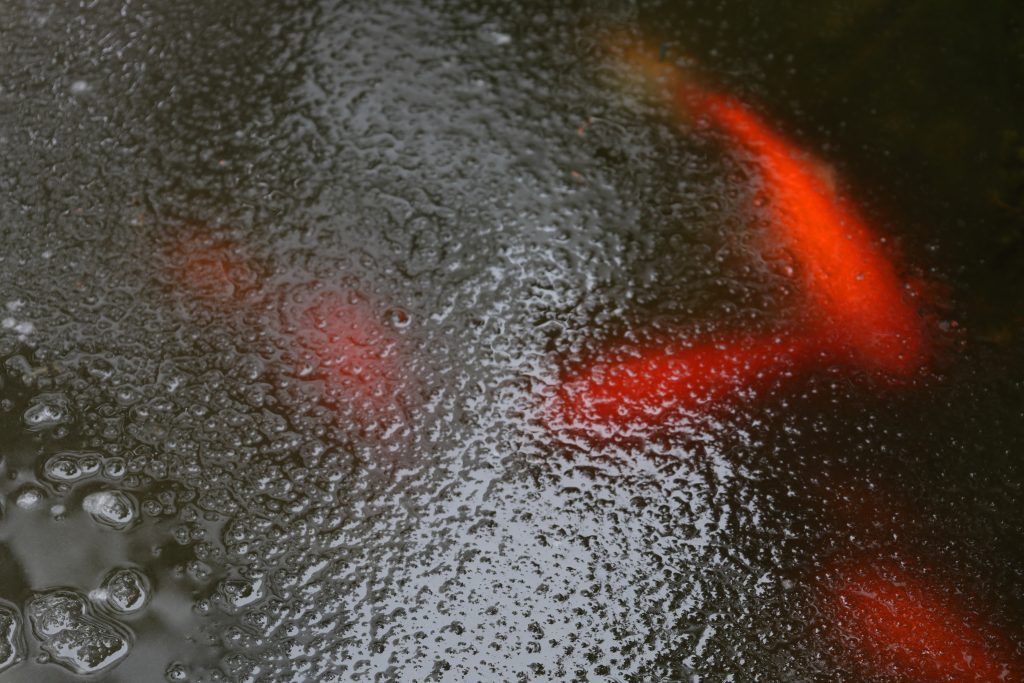
Should I Winterize My Pond? Essential Steps for Cold Weather Protection
As winter approaches, pond owners may wonder if they need to winterise their water features. Ponds add beauty and tranquility to gardens, but cold weather can pose challenges for aquatic life and equipment.

Winterising a pond is essential if you live in an area where temperatures drop below freezing. This process helps protect fish, plants, and pond components from harsh winter conditions. It involves steps like removing debris, adjusting water levels, and installing de-icers.
For those in milder climates, full winterisation might not be necessary. Still, taking some precautions can ensure your pond stays healthy year-round. Proper preparation can save time and money on repairs come spring, while keeping your aquatic ecosystem thriving through the colder months.
Understanding Pond Winterization
Pond winterization is the process of preparing a pond for cold weather. It helps protect fish, plants, and equipment from harsh winter conditions.
Winterizing your pond involves several key steps. First, remove fallen leaves and debris from the water. This prevents harmful gases from building up under ice.
Next, consider adding a pond heater or de-icer. These devices keep a small area of water unfrozen, allowing gases to escape. They also provide an opening for fish to access oxygen.
Trim back aquatic plants and remove any dead foliage. Some hardy plants can remain, but tropical species should be brought indoors.
It’s important to check pond equipment. Clean filters and pumps thoroughly. In very cold areas, remove pumps to prevent damage from freezing.
Fish care is crucial during winterization. As temperatures drop, reduce feeding. When water is below 10°C, stop feeding entirely. Fish enter a state of dormancy in cold water.
Pond netting can be useful. It keeps leaves and debris out while protecting fish from predators. Make sure the net is secure and doesn’t sag into the water.
In areas with mild winters, a pond may not need extensive winterization. However, it’s still wise to monitor water quality and remove debris regularly.
Preparing Pond Plants for Winter

Pond plants require specific care as the weather turns cold. Some species can stay put, while others need protection or removal to survive winter. Proper preparation helps ensure your aquatic garden thrives come spring.
Winterise Pond Plants
Hardy pond plants like water lilies can remain in the pond over winter. Lower them to deeper water, about 45-60 cm below the surface. This protects them from freezing. Trim off dead foliage to prevent decay.
Some marginal plants like creeping Jenny are tough enough to stay put. Cut back their stems to about 5 cm above the water line. Cover the crown with straw for extra insulation.
For floating plants, remove most and keep a few indoors in containers of pond water. Place them in a cool spot with some light. This preserves them for next season.
Removing Sensitive Species
Tropical pond plants can’t handle freezing temperatures. Lift them out before the first frost. Trim the foliage and roots, then pot them up.
Store tropical species indoors in a cool, bright spot. Water sparingly to keep the soil just moist. A garage or basement often works well.
Some non-hardy plants may survive in milder areas if the roots don’t freeze. Try wrapping the pot in bubble wrap and sinking it deep in the pond. But removal is safer in colder regions.
Pond Equipment Management

Proper management of pond equipment is crucial for maintaining a healthy aquatic environment during winter. This involves cleaning key components, adding heating and aeration devices, and using protective coverings.
Clean Filters and UV Clarifiers
Regular cleaning of filters and UV clarifiers helps keep pond water clear and healthy. Remove debris and rinse filter media with pond water to preserve beneficial bacteria. For UV clarifiers, wipe the bulb and clean the quartz sleeve to ensure maximum effectiveness.
Some filters may need to be removed and stored indoors to prevent damage from freezing temperatures. Check manufacturer guidelines for specific winter care instructions.
Selecting the Right Pond Heater
Pond heaters prevent ice formation and maintain a small opening for gas exchange. Choose a heater based on pond size and local climate.
Floating de-icers are popular for small to medium ponds. They sit on the water surface and keep a small area ice-free.
For larger ponds, submersible heaters offer more thorough warming. These units sit at the bottom and circulate warm water throughout the pond.
Install a Pond Aerator
Aeration is vital for fish health in winter. It increases oxygen levels and prevents toxic gas buildup under ice.
Choose an aerator sized for your pond volume. Place it in a shallow area to avoid disturbing hibernating fish at the bottom.
Some aerators have built-in de-icing features, offering dual benefits. These can be especially useful in colder regions.
Utilising Pond Netting
Pond netting serves multiple purposes during winter. It keeps fallen leaves and debris out of the water, reducing the need for cleaning.
Install netting before leaves start to fall. Secure it tightly around the edges to prevent gaps.
Some nets also deter predators like herons, which may be attracted to sluggish fish in cold water.
Remove heavy snow from the netting to prevent collapse and allow light to reach the pond.
Maintaining Water Quality
Keeping pond water healthy during winter is crucial for fish and plant life. Proper care ensures a thriving ecosystem when warmer weather returns.
Boosting Beneficial Bacteria Levels
Cold water bacteria play a vital role in winter pond health. These microorganisms break down waste and keep water clean. To support them:
• Add cold-hardy bacteria monthly • Remove dead plants and debris • Use a pond vacuum to clean the bottom
Cold water beneficial bacteria work slowly but steadily. They need less food than warm-water types. A light feeding of fish food can help them thrive.
Don’t overfeed fish in winter. Excess food leads to more waste. This can harm water quality and stress fish.
Oxygenation During the Winter
Ice can trap gases and reduce oxygen levels. This puts fish at risk. To boost oxygen:
• Keep a hole in the ice with a de-icer • Use an air pump with an air stone • Install a waterfall or fountain if climate allows
Moving water helps mix in oxygen. It also prevents ice from fully covering the pond. A small pump can keep water flowing gently.
Be careful with fountains in very cold areas. They may create ice build-up on nearby plants or surfaces.
De-icing and Temperature Regulation
Keeping your pond from freezing over in winter is crucial for fish health and water quality. De-icers and covers are key tools for maintaining safe temperatures and oxygen levels.
Choosing an Effective De-icer
Pond de-icers come in floating and submersible models. Floating de-icers sit on the water’s surface, creating a hole in the ice for gas exchange. Submersible units rest on the pond bottom, circulating warmer water upwards.
For small ponds, a 100-watt floating de-icer is often enough. Larger ponds may need 300 watts or more. Look for models with automatic shut-off to save energy when temperatures rise.
Place the de-icer away from the edges to prevent damage from expanding ice. Check it regularly to ensure it’s working properly throughout winter.
Covering the Pond
A pond cover can help maintain warmer water temperatures and block debris. Mesh covers allow light and air through while keeping leaves out. Solid covers offer better insulation but need venting to prevent gas buildup.
Install the cover before temperatures drop too low. Ensure it’s secure but not touching the water surface. Leave a small opening for a de-icer if needed.
Remove snow from solid covers to allow sunlight in. This helps maintain oxygen levels for fish and plants. Check covers often for damage or sagging to prevent issues.
Winter Pond Cleaning Strategies
Keeping your pond clean during winter is key for fish health and water quality. A few simple steps can make a big difference.
Utilising a Pond Vacuum
A pond vacuum is a handy tool for winter cleaning. It helps remove built-up muck and debris from the bottom of your pond.
To use a pond vacuum:
- Choose a mild day to clean
- Break up any thin ice first
- Gently vacuum the bottom, avoiding fish and plants
- Empty the vacuum often to prevent clogging
Be careful not to disturb hibernating fish. Aim to remove about 10-15% of the debris. This leaves some beneficial bacteria in place.
For best results, vacuum once or twice during winter. This keeps your pond tidy without causing too much stress to its habitants.
Final Checklist Before Winter Arrives
As winter approaches, pond owners should complete a few key tasks to prepare their water features. This checklist covers the essential steps to take before cold weather sets in.
Clean the pond thoroughly Remove fallen leaves, debris, and excess plant matter. Trim back overgrown aquatic plants. A clean pond helps prevent water quality issues during winter.
Check equipment Inspect pumps, filters, and heaters for proper function. Replace or repair any faulty components. Ensure all electrical connections are secure and protected from the elements.
Adjust feeding Gradually reduce fish feeding as temperatures drop. Stop feeding entirely when water temperatures fall below 10°C (50°F). Fish metabolism slows in cold water, so they need less food.
Test water quality Measure pH, ammonia, and nitrite levels. Make any needed adjustments before winter. Stable water chemistry helps fish stay healthy during the cold months.
Add cold-water bacteria Introduce beneficial bacteria that thrive in cooler temperatures. These microbes help maintain water quality when the pond’s ecosystem slows down.
Install a de-icer or pond heater For ponds with fish, a heating device keeps a small area ice-free. This allows for gas exchange and prevents toxic buildup under ice cover.
Set up netting Place a net over the pond to catch falling leaves and debris. This reduces organic matter that can decay in the water over winter.
By completing these tasks, pond owners can help ensure their water features and aquatic life stay healthy through the cold season.



